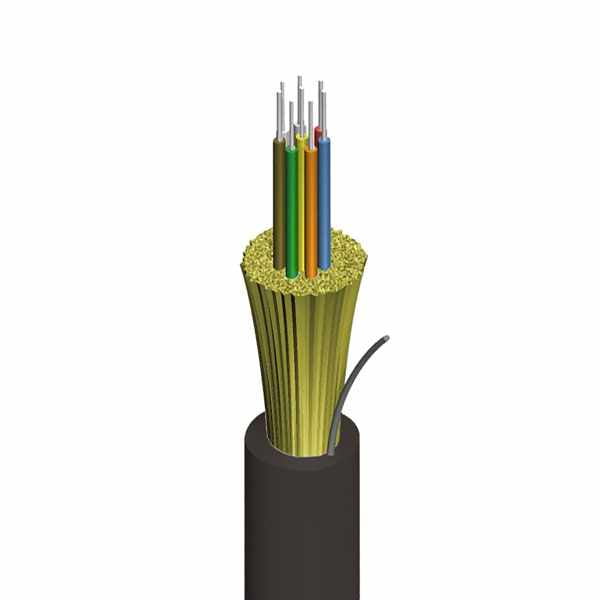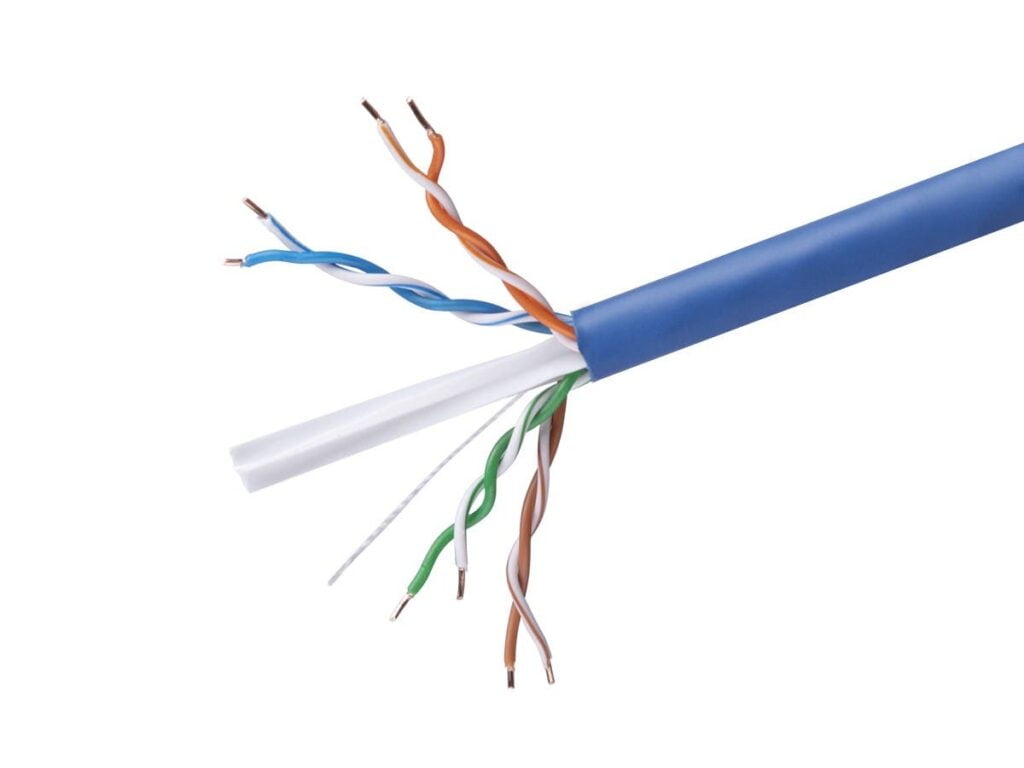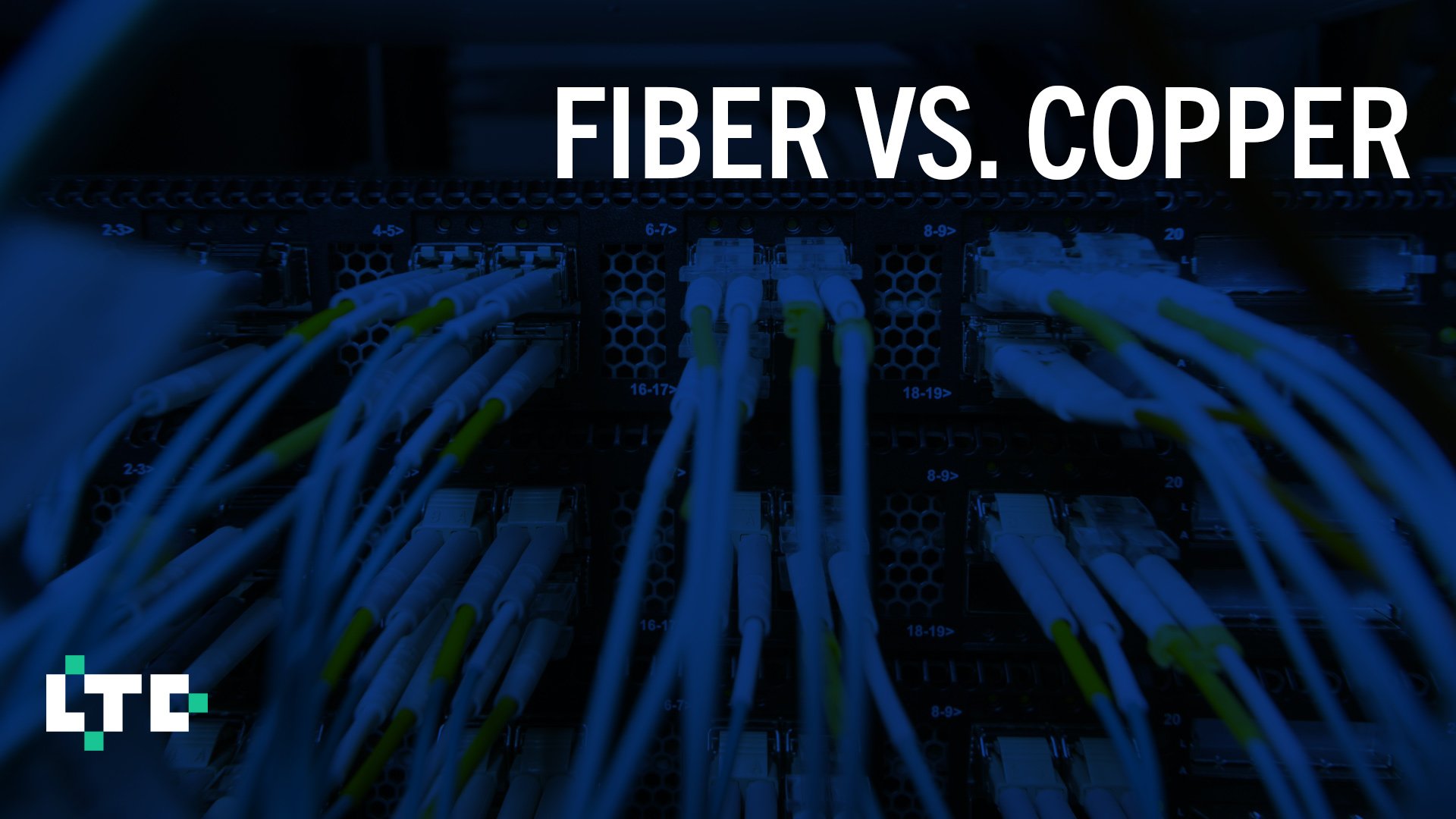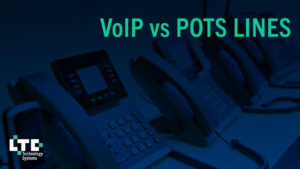We’ll briefly explain what fiber optics and copper cables are, then compare them. Here’s an overview of the topics:
- Reliability
- Speed and Bandwidth
- Security
- Distance
- Cost
- Durability
Let’s begin.
What is Optical Fiber?
Optical fiber is a flexible and transparent fiber made of one or more strands of glass. It’s slightly thicker than a human hair. Using a laser, light is pulsed at one end that carries digital information. The other end decodes the information using an optical receiver.

What are Copper Cables?
Copper wire uses electric waves to signal data. It then converts the wave patterns into an analog or digital signal. A copper cable refers to a group of two or more copper wires.

Reliability
Because copper cables are electrical conductors, data transmission can be disrupted by electromagnetic interference (EMI). Therefore, copper cannot be placed near any significant power sources, industrial equipment, or a lot of other copper cables. For most small businesses, this is not an issue.
In general, fiber is not susceptible to extreme temperature changes and severe weather, which do affect copper cables. However, power can still be affected which can damage any cables or other hardware you have.
Speed and Bandwidth
Fiber is better in terms of speed and bandwidth. It can send data at around 31% slower than the speed of light, while copper is less than 1% of the speed of light (or 10 gigabits per second). Optical fiber has more bandwidth which allows you to transfer more data at a time. As a result, your connectivity will be more efficient.
In most cases, the speed that fiber offers is not necessary. Copper will be fast too, but both depend entirely on your internet service provider (ISP).
Security
Copper cables transmit electricity, so they radiate signals. Unfortunately, they can be tapped and data can be read from anywhere along the cable – in certain situations. With the right installation and maintenance, it is unlikely. On the other hand, it’s impossible to tap into a fiber cable. If it becomes damaged, finding out where is simple – but costly – and takes longer to repair.
Distance
Copper is the fastest and safest in short distances. It can carry signals for about 330 feet. They can go longer, but a booster is needed. Over long distances, fiber may be better, but usually small businesses do not need it.
Cost
Optical fiber for your network is much more costly upfront. For both cables, you have to consider the maintenance, interference, risk, and replacement costs. Although fiber has a longer lifespan, it’s a large investment that may not give you the return you need, depending on your business. Most small businesses prefer the reasonable costs of copper.
Durability
Surprisingly, fiber optic cables are more durable than copper cables. They are more flexible to navigate spaces, can go in water, and be pulled with more force. Although large, copper cables cannot handle as much tension. Regardless, the right technician will use proper care during installation.
Copper lasts for about five to ten years before needing replacement. Fiber optic cables are designed to last at least 10 years, but oftentimes that is extended.
Final Thoughts
For projects such as interconnecting equipment, buildings, or in between floors, optical fiber would be best. Copper cables are better for things such as smaller networks, wiring closets, and low priority traffic. However, your consultant should take into consideration your business needs and goals. Learn more about fiber here.
If you have any questions, contact us.



